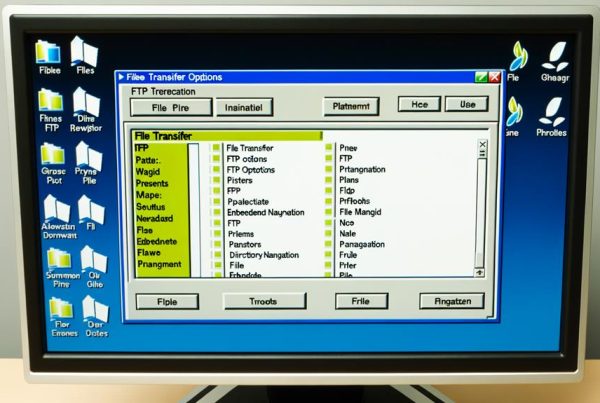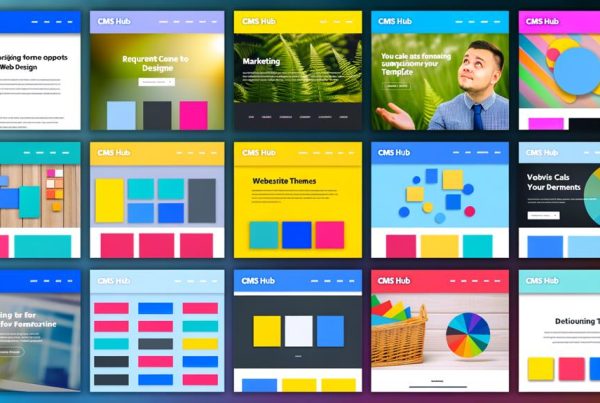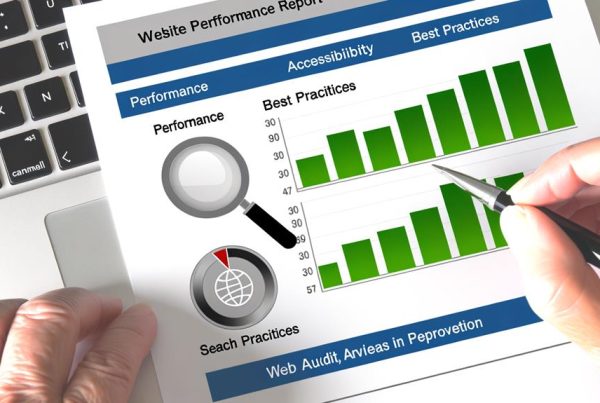As we embark on the journey of building a technology ecosystem, we can't help but think of the recent success story of Company X, which seamlessly integrated a suite of cloud-based applications to revolutionize their customer service operations. The strategic alignment of their technology stack empowered them to efficiently manage customer interactions, analyze data in real-time, and deliver personalized experiences at scale.
However, as we delve deeper into the intricacies of building a technology ecosystem, we realize that success goes beyond just integrating various solutions. It involves a strategic approach to curating existing apps, identifying scalable solutions, and optimizing integrations to drive sustainable growth and innovation.
Join us as we unravel the essential elements of building a robust technology ecosystem and gain the knowledge needed to navigate the complex world of modern business technology.
Understanding Technology Ecosystems

Understanding Technology Ecosystems is essential for businesses to seamlessly integrate their tech solutions and drive effective collaboration across departments.
A technology ecosystem encompasses the interconnected web of tools and solutions that power a company's operations. By understanding this ecosystem, businesses can strategically leverage technology to liberate themselves from siloed processes and foster a culture of seamless collaboration.
This understanding allows for the identification of redundancies, inefficiencies, and areas for improvement, leading to a more streamlined and efficient operation. Embracing a strategic vision of technology ecosystems empowers businesses to make informed decisions about the integration, optimization, and scalability of their tech solutions.
This knowledge liberates organizations from the constraints of outdated and disjointed systems, enabling them to harness the full potential of their technological resources.
Building a Software Ecosystem
As we embrace a strategic vision of technology ecosystems, we actively curate the apps we already have and identify processes that could be improved in order to build a robust software ecosystem for seamless integration and collaboration.
By eliminating non-performing tools and implementing scalable applications, we pave the way for a dynamic and efficient software environment. We prioritize indicators of scalability such as free trials, testimonials, flexible pricing, and feature upgrades to ensure that our software ecosystem can grow with our business.
Emphasizing the integration of our software ecosystem is crucial for optimal functionality and collaboration. We maximize native integrations to simplify data transfer and collaboration, considering custom integrations as a last resort due to associated costs and time investment.
Our strategic approach to building a software ecosystem liberates us from limitations, enabling seamless and agile operations.
Curating Existing Apps

To optimize our technology ecosystem, we meticulously evaluate and curate the existing apps, ensuring that each tool contributes effectively to our business operations. By curating our apps, we're strategically aligning our technology with our vision for seamless, efficient operations.
We liberate ourselves from underperforming or redundant tools, freeing up resources and streamlining our processes. This strategic curation empowers us to focus on apps that drive innovation and productivity. We're visionary in our approach, seeking apps that not only meet our current needs but also have the potential to scale with our business.
With this deliberate curation, we're poised to create a technology ecosystem that propels our business forward and fosters a culture of continuous improvement.
Identifying Process Improvements
We will strategically assess our operational workflows to identify opportunities for improvement and streamline our processes. By doing so, we aim to enhance efficiency and productivity within our technology ecosystem. Our focus is on empowering teams to work more collaboratively and innovatively. To achieve this, we are actively seeking ways to optimize our current processes and integrate new solutions that align with our business objectives. This approach will lead to a more agile and adaptable ecosystem, allowing us to respond dynamically to market changes and customer needs.
| Process Improvements | Expected Impact |
|---|---|
| Automation of repetitive tasks | Increased efficiency and time savings |
| Enhanced data analytics capabilities | Informed decision-making and insights |
| Streamlining communication channels | Improved collaboration and agility |
| Integration of customer feedback loops | Enhanced product development and customer satisfaction |
| Implementation of scalable solutions | Future-proofing our technology ecosystem |
Our commitment to identifying process improvements reflects our dedication to continuous enhancement and our vision for a liberated and empowered technology ecosystem.
Considering Scalability

Our dedication to continuous enhancement and a liberated technology ecosystem positions us to strategically consider scalability as a pivotal factor in optimizing our technology ecosystem for future growth and adaptability.
As we assess our technology infrastructure, we prioritize solutions that can seamlessly expand to support increased demands and evolving business requirements.
Scalability isn't just about handling higher volumes; it's about ensuring that our technology can adapt to new functionalities and integrate with emerging tools.
By embracing scalable technologies, we empower our ecosystem to evolve in tandem with our organizational needs, fostering agility and innovation.
Our commitment to scalability reflects our proactive approach to future-proofing our technology ecosystem, enabling us to embrace opportunities and navigate challenges with confidence.
Connecting a Tech Ecosystem
In our quest to fortify our technology ecosystem, we prioritize streamlined and innovative methods for connecting our diverse range of tech solutions. When connecting a tech ecosystem, we have several options at our disposal. Native (or In-App) Integrations, offered by software vendors, connect common use cases between apps. Custom Integrations provide tailor-made solutions but can be costly and time-consuming. iPaaS Tools, such as Zapier, bridge the gaps between different tools and enable seamless data exchange and automation. We advocate for maximizing native integrations to simplify data transfer and collaboration. Custom integrations should be considered as a last resort due to potential costs and time investment. Our approach to connecting our tech ecosystem reflects our commitment to liberation, enabling us to harness the full potential of our technology solutions.
| Integration Type | Description |
|---|---|
| Native Integrations | Offered by software vendors to connect common use cases between apps. |
| Custom Integrations | Tailor-made solutions for specific business needs, but costly and time-consuming to build and maintain. |
| iPaaS Tools | Third-party, cloud-based solutions like Zapier that bridge the gaps between different tools and enable seamless data exchange and automation. |
Native (or In-App) Integrations

Maximizing the value of software subscriptions, native integrations streamline data transfer and facilitate seamless collaboration between apps within our technology ecosystem. These integrations, offered by software vendors, cover typical workflows users expect to have between apps, such as connecting CRM and contact repositories or ecommerce platforms and payment gateways. They're included in subscriptions or offered as additional products, enhancing the overall functionality of our ecosystem.
By leveraging native integrations, we liberate our teams from the constraints of manual data transfer and enable them to focus on higher-value tasks. This strategic approach not only streamlines operations but also sets the stage for future scalability and innovation.
As we optimize our technology ecosystem with native integrations, we pave the way for greater efficiency, collaboration, and growth.
Custom Integrations
Paving the way for greater efficiency, collaboration, and growth through native integrations, we now turn our focus to the strategic implementation of custom integrations within our technology ecosystem.
Custom integrations offer tailor-made solutions for specific business needs, empowering us to unleash the full potential of our technology stack. While they require a significant investment of time and resources, these integrations can provide a competitive edge by streamlining processes and enabling seamless data flow.
By harnessing custom integrations, we can break free from limitations and mold our technology ecosystem to perfectly align with our unique operational requirements.
As we continue to evolve and expand, custom integrations serve as a strategic enabler, allowing us to transcend barriers and drive innovation, ultimately propelling our organization towards unparalleled success.
Frequently Asked Questions
How Can a Company Effectively Measure the ROI of Investing in a Technology Ecosystem?
We can effectively measure the ROI of investing in a technology ecosystem by analyzing the impact on productivity, efficiency, and collaboration.
We assess how the ecosystem streamlines processes, reduces manual work, and improves data accessibility.
By tracking key performance indicators such as time saved, error reduction, and revenue growth, we gain insights into the tangible benefits of our investment.
This enables us to make informed decisions and optimize our technology ecosystem for maximum returns.
What Are Some Common Challenges Companies Face When Integrating New Apps Into Their Existing Technology Ecosystem?
When integrating new apps into our existing technology ecosystem, we face common challenges such as interoperability issues, data security concerns, and potential disruptions to existing workflows.
We strategically approach these challenges by conducting thorough compatibility assessments, prioritizing data privacy, and implementing seamless transition plans.
Our visionary approach ensures that new app integration enhances rather than hinders our ecosystem, empowering us to embrace innovation while maintaining operational efficiency.
What Are Some Key Considerations for Ensuring Data Security and Privacy When Connecting Different Apps Within a Technology Ecosystem?
When connecting different apps within a technology ecosystem, we prioritize data security and privacy. We ensure that all integrations comply with industry standards and regulations. We implement encryption, access controls, and regular security audits to safeguard sensitive information.
Our vision is to create a seamless, collaborative environment while maintaining the highest levels of data protection. We understand the importance of trust and strive to build a secure foundation for our technology ecosystem.
What Are Some Best Practices for Training Employees on Using New Apps and Technology Solutions Within a Company's Ecosystem?
When training employees on new apps and technology solutions within our company's ecosystem, we prioritize hands-on learning experiences. We believe in providing interactive training sessions that empower our team to explore and experiment with the tools.
How Can Companies Effectively Manage and Prioritize the Constant Influx of New Technology Solutions and Apps in the Market to Maintain a Streamlined and Efficient Technology Ecosystem?
To maintain a streamlined and efficient technology ecosystem, we prioritize new solutions by aligning them with our strategic goals.
We continuously evaluate incoming apps, focusing on scalability, integration capabilities, and potential for collaboration. We leverage native integrations where possible, simplifying data transfer and maximizing value.
Custom integrations are considered sparingly due to associated costs and time investment.
Our approach ensures a dynamic, cohesive ecosystem that adapts to our evolving business needs.
Conclusion
As we continue to navigate the ever-changing landscape of modern business technology, it's crucial for us to understand the importance of building a robust technology ecosystem.
By curating existing apps, identifying process improvements, and considering scalability, we can create a seamless and adaptable infrastructure for our organization.
With native and custom integrations, we can connect our tech ecosystem and optimize our operations.
Embracing a proactive approach to technology ecosystem development is key to staying ahead in the digital era.







